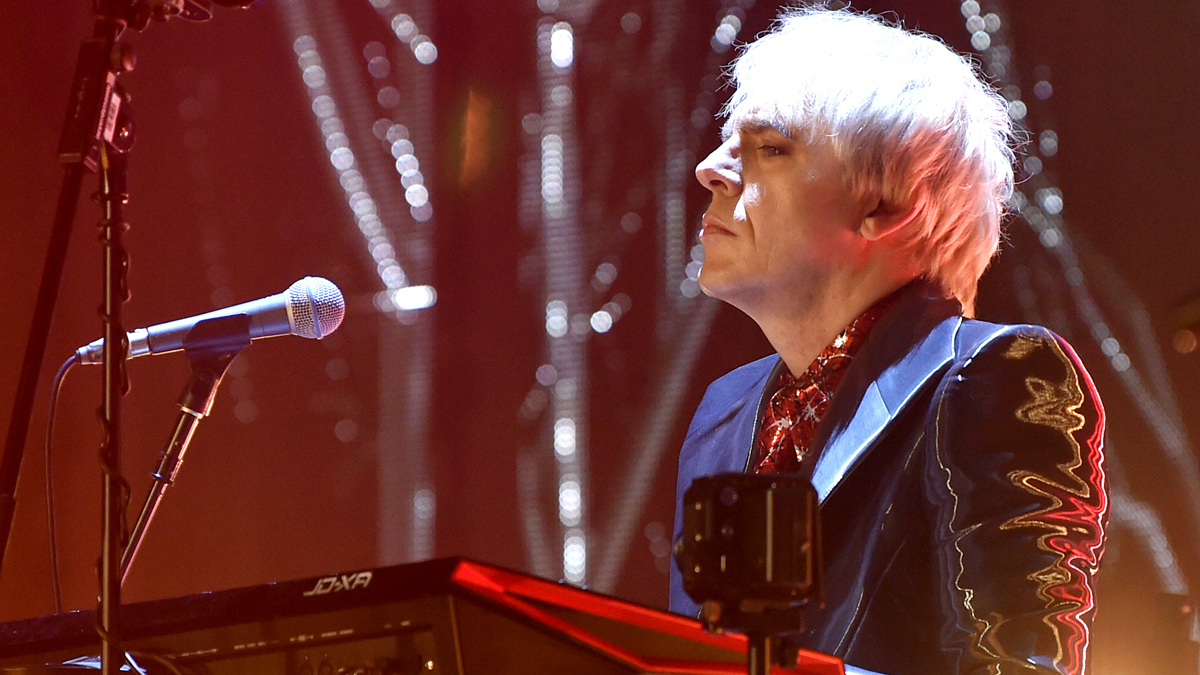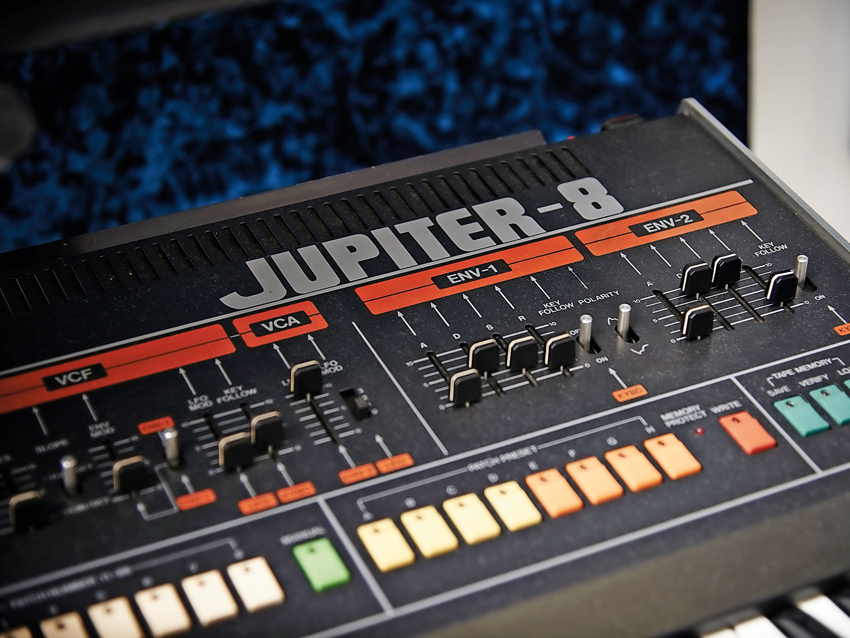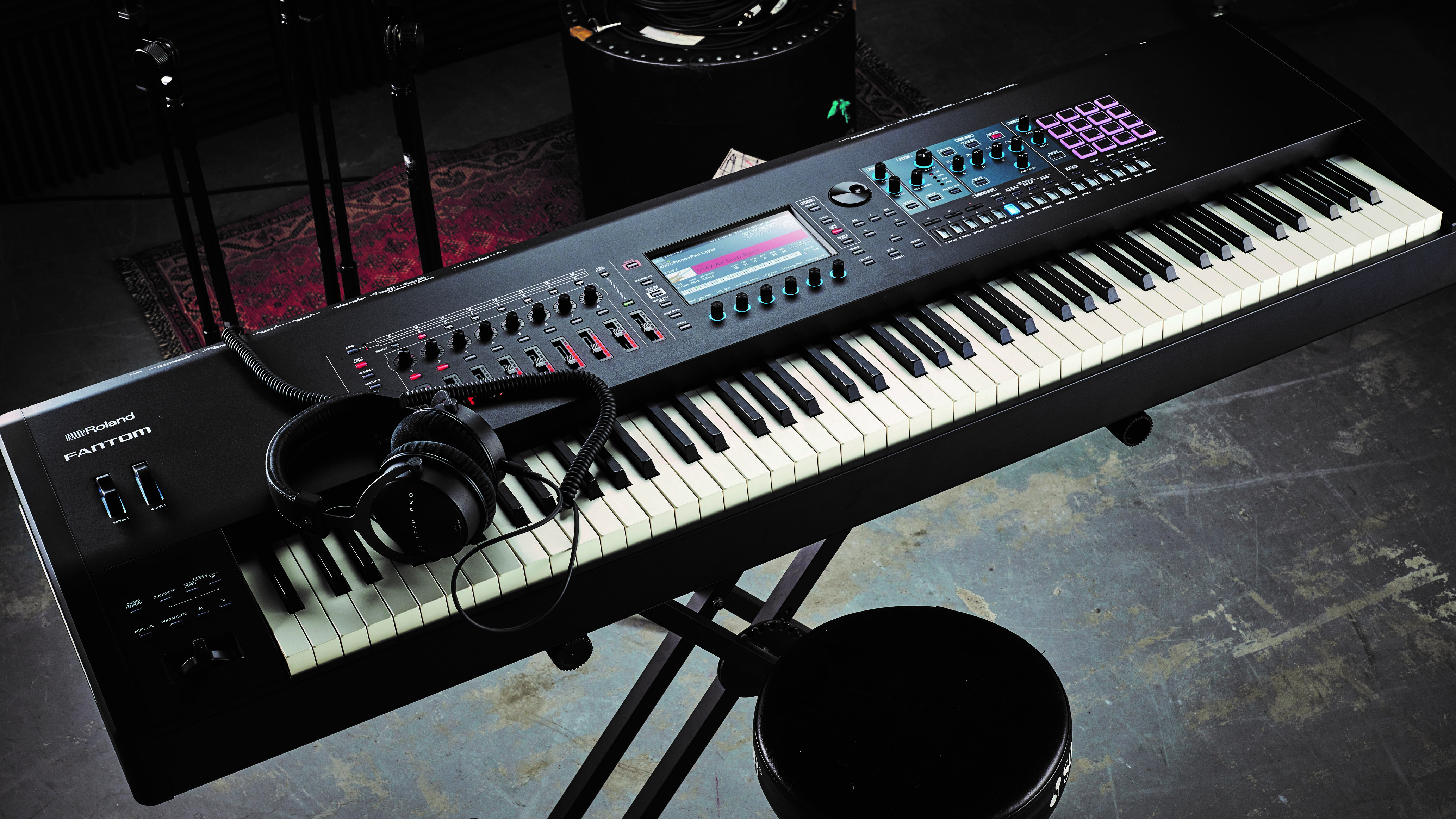Nick Rhodes on his top 5 synths: “I’ve got nothing against digital synths, but I just happen to prefer the real thing”
The Duran Duran man and Wendy Bevan discuss their brooding electronic project, Astronomia

“The universe has been a constant theme for artists throughout the centuries,” explains Nick Rhodes. “Doesn’t matter if you’re a painter, a filmmaker or a musician; when you want to reach beyond this world, all you have to do is look up at the night sky.”
Like the rest of us, Rhodes - keyboard player and founder member of pop gods Duran Duran - spent most of the last year stuck at home, in London. Back in March 2020, he’d just finished producing an album by British multimedia artist Wendy Bevan and was looking for a new project to keep him busy.
“I’m not very good at doing nothing,” he laughs. “After we completed the album, Wendy sent me a couple of electronic/vocal atmospheres she’d been working on and that was all I needed. I was immediately back in the studio, getting stuck into my old analogue synths… the Jupiter-8, the Moog, my Prophet-5.
“The space theme didn’t occur to us until a few weeks later. At first, we were just experimenting with sound, but the more tracks we created, the more they sounded like they belonged out there. [Over Zoom, Rhodes points skywards].
“Maybe it had something to do with all of us being in lockdown, too. We were literally trapped, and this was an attempt to take our imaginations somewhere else. A cry for freedom.”
Rhodes and Bevan recorded 52 tracks that will eventually be released as four separate albums. The first, Astronomia: The Fall of Saturn, came out in March and features 13… well, the only word for them is soundscapes.

Some are short, some brooding, some epic, some have ghostly vocals. Some have hints of Eno, Tangerine Dream, Stars of the Lid or Gustav Holst. It’s certainly a far cry from the likes of Is There Something I Should Know?, Rio and The Wild Boys.
Want all the hottest music and gear news, reviews, deals, features and more, direct to your inbox? Sign up here.
“A song that’s going to be played on mainstream radio for the next 30 years will generally conform to a well-known structure,” reckons Rhodes. “The beauty of this project for me is that we had no structure. The music went wherever it felt like going.
“Wendy would send me some music [Bevan was based in LA during lockdown], I would add something, send it back and so on. We had no idea of a start point or bpm or where there might be a key change. We didn’t even worry about how long each piece was. We just added or subtracted from a track until it felt finished.
“It’s like when you’re writing a letter or drawing a picture. There is a moment when you sit back and think, ‘OK, I can stop now’.”
Bevan had a small Logic setup in LA where she recorded vocals and heavily effected violin, while Rhodes worked out of Duran Duran’s production studio in London.
“Obviously, I record on a digital platform, Pro Tools, but more or less everything you hear from me on these 52 tracks is analogue. I’ve got nothing against digital synths, but I just happen to prefer the real thing.
“Think about an old school 35mm camera versus a modern digital camera. Yes, my digital camera has all the bells and whistles, and it can do some amazing tricks, but when I look at the final result it seems thinner and flatter than the 35mm format. You don’t get the same depth of field.
“The Arturia stuff is probably the best of the bunch, but when you compare any software version with a real Moog or Jupiter-8, you can instantly hear the difference. There’s an incredible warmth and character to analogue. A sort of… uncontrollability. It will surprise you.”
Rhodes and Bevan actually met in 2018 via a mutual friend who was convinced they’d end up working together.
“I told Nick I was looking for someone to produce my album,” says Bevan, “and the next thing I knew, we were in the studio. That was a bit weird because I was a Durannie during the View To A Kill period.
“I quickly fell in love with the way Nick operates in the studio. He’s happy to work without rules and boundaries. He doesn’t mind mistakes.
“I am a classically-trained vocalist and violinist, but mistakes were always a problem for me when I was at school. You weren’t allowed to make them. Everything had to be done a certain way. Even something as simple as the way you hold your violin bow.
“When I was nine, I spent nearly two months purely practising bow posture. Eventually, that begins to suck the enjoyment out of music.”
“I am definitely NOT classically-trained,” adds Rhodes with a grin. “I bought my first guitar from Woolworths and learned to play - badly - by listening to Bowie, Roxy Music, the Sex Pistols and the Clash. I wanted to be Mick Ronson, but I was never good enough, so I decided to buy a synthesizer and make some weird noises.
“My first keyboard wasn’t even a synth; it was a Stylophone, which I got from my aunt’s catalogue. I paid it off weekly. It actually had two pens and made some very interesting sounds. I’ve still got it. And it works!
“Synths were ridiculously expensive in the ‘70s. It took me six months to save up for my Wasp; 300 quid was a lot of money for a teenager. It was only after Duran Duran got a management deal and a bit of cash from the record company that I was able to get things like my first Jupiter, the Prophet and the Crumar Performer.”
My first keyboard wasn’t even a synth; it was a Stylophone, which I got from my aunt’s catalogue. I paid it off weekly. It actually had two pens and made some very interesting sounds. I’ve still got it. And it works!
When asked to describe the early Duran sound, Rhodes chooses his words carefully. “Somewhere between Kraftwerk and Bowie. Then we tried to add the energy from punk bands like The Clash. There was Roxy and Cockney Rebel, too. And disco, of course. All five of us loved Chic. When I first heard them on Radio Luxembourg, I was completely blown away by the groove. They were the band that made John Taylor switch from guitar to bass. Bernard Edwards… what can you say?
“The main thing I remember about the early-’80s is the amount of great music that was being made. You still had Kraftwerk and the Clash, but there was Madonna and Prince, the Cure, INXS, Siouxsie and the Banshees, Human League, the Smiths. And we were all trying to carve out our own little niche. We wanted to sound different.
“I think that’s a lot harder these days because there is so much more music out there. And maybe bands don’t want to sound different anymore. The way music works with algorithms and what have you, maybe it’s better to sound like everybody else.”
Alongside Astronomia, Rhodes has been in the studio with Simon Le Bon, John Taylor and Roger Taylor - original guitarist Andy Taylor is no longer with them - putting together a new Duran Duran album. The recent single, Invisible, showcased a harder, chunkier sound, with co-production from DJ Erol Alkan. The album, Future Past, is due in October and features collaborations with Giorgio Moroder and Mark Ronson.
“It’s 40 years since we released the first Duran Duran album,” says Rhodes. “But the amazing thing is that I’m still using a lot of the gear I used back then. My three Jupiters and my Moog have been on almost every album. And I still like to play my keyboard parts by hand. Programming everything on MIDI feels like cheating.
“We are planning to tour, but I won’t be taking any of the analogue synths out with me. I had to retire them from live work about 15 years ago. They were always getting damaged and it was getting harder to repair them. God, if I lost my Jupiters, I don’t know how I’d manage. I think I’d have to give up music!”
Astronomia: The Fall of Saturn by Nick Rhodes and Wendy Bevan is out now.
Nick Rhodes’ top 5 synths

Roland Jupiter-8
“For me, the Jupiter is still the warmest-sounding, best-designed synth out there. Wonderfully intuitive, too. You don’t need a maths degree to get your head around it. It’s been used on most records I’ve played on and it’s the one I create most of my sounds with. If I can imagine a noise in my head, chances are that I can make it with the Jupiter.”
Minimoog Voyager
“I wanted to include the original Minimoog, but I guess this is the updated version. The stable version. I can do a lot of things with the Jupiter, but when it comes to bottom end and sub-bass, no one beats Bob Moog.”
Elka Synthex
"When people talk about analogue, you get the same names coming up every time: Roland, Korg, Sequential, ARP. Elka are slightly more obscure, but their synths have a really unique sound.
“Great for pads and the most beautiful bell sounds you’ll find on any synth. It’s also got a quirky stereo setting that splits the notes into strange combinations of left and right. A synth that always makes me smile.”

Roland Fantom-8
“Like I said earlier, I’m not a big fan of digital synths, but this is an absurdly powerful machine, and it comes with a reverb that sounds as good as the Lexicon 224X. The patches are well curated, and I was delighted when they asked me if there were any sounds I wanted them to include.
“The Fairlight sounds were my suggestion, and they are pretty authentic. It’s also got an analogue filter, which allows me to keep one foot in my favourite world.”
Sequential Circuits Prophet-5
“Alongside my Rolands and the Moog, this is another synth I couldn’t live without. The chips sound different to anything else I’ve heard. There’s real emotion and depth when you mess with the resonance.
“One of my favourite keyboard players, Wally Badarou, used the Prophet when he was working with Grace Jones and Talking Heads. A very elegant sounding synth.”

